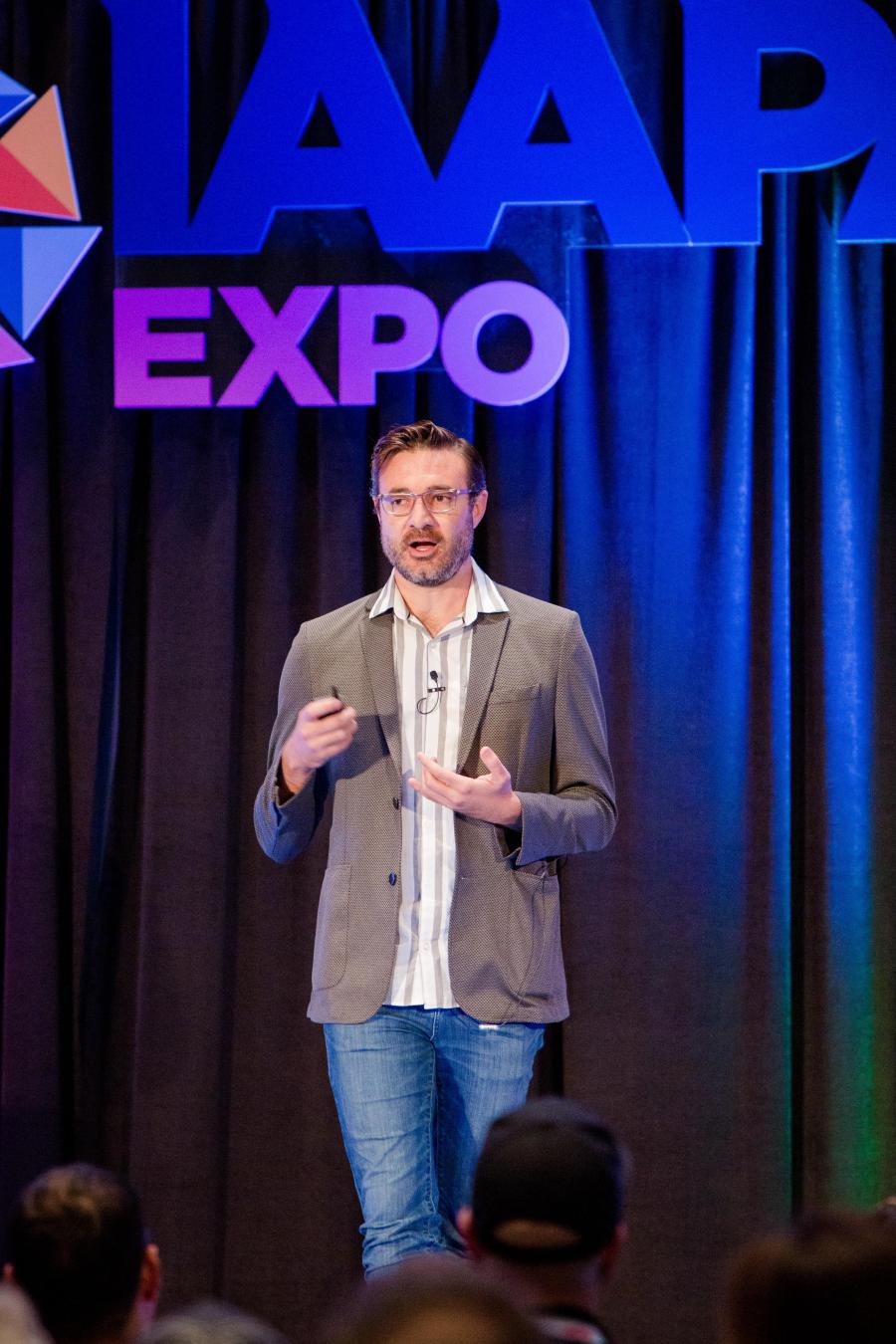Meow Wolf Becomes a Game Changer

by Scott Fais
What happens when you suspend disbelief and believe in the unconventional? Forests blossom with pastel-colored trees, dinosaur skeletons become drums, and the average laundry room dryer becomes a porthole to another dimension.
Welcome to Meow Wolf, the innovative creative space that bends traditional definition.
“It’s so hard,” said Meow Wolf co-founder Vince Kadlubek after pausing when asked to describe the revolutionary attraction. “It’s about cultural expression and ultimately about people’s artist takes on the world.”
Part art gallery, part fun house, and part museum, Meow Wolf is a walk-though attraction that relies on unexpected creative content.
“The general population wants brilliant creative and is willing to pay for it,” Kadlubek said to a full room at IAAPA Expo during “Game Changer – Creativity is the New Attraction.”
Kadlubek shared how the 15,000-square-foot attraction—housed in a former Santa Fe, New Mexico, bowling alley—has harnessed an appetite for unpredictable artistry. The interior of Meow Wolf appears to house a two-story Victorian home, affectionately named “The House of Eternal Return.” Navigating the home is like life, according to Kadlubek. There is no map, no app, and no guide. As visitors walk through different set pieces, they begin to discover all is not as it seems in the family room, dining room, and kitchen. A tug on the refrigerator door reveals a bright white corridor. Step inside the fridge and find uncharted pathways leading to imaginative areas that blend art with surprise.
“My hope is that we create something where someone goes down that rabbit hole, and they say, ‘My life will never be the same again,’” Kadlubek said.
Like most artists, Kadlubek hopes the artistic experience at Meow Wolf will lead to a transformation in the guests who visit.
“Is there a way to unlock a secret layer of creativity in the world? That’s what excites me,” Kadlubek said.
How can an attraction leave guests inspired? Kadlubek believes design needs to include three steps. First, he suggests making attractions that encourage empowerment. When visitors feel empowered to take the experience into their own hands, they make a solid connection, according to Kadlubek. At Meow Wolf, that means touching props, pulling on kitchen appliance handles, and crawling through portholes. Step two is creating a sense of exploration. When visitors feel as if they are allowed to crouch through a fireplace at Meow Wolf, they explore more and more, letting go of preconceived notions. At this point, Kadlubek said the discovery stage begins, and hearts and minds are ready to be transformed.
He also suggests using an original narrative, without leaning upon an intellectual property (IP) to tell a story.
“We rely too much on recognizable IP because that has become the backstop for investors to know they are going to get a return on their investment,” Kadlubek said of current design trends to use well-known characters. Yet, he is careful not to allow the Meow Wolf brand to become an IP itself.
“We represent the unknown. When you visit a Meow Wolf attraction, you don’t know what to expect,” Kadlubek said, adding that during periods of high attendance in Santa Fe, they will hire costumed actors who engage with visitors, adding to the unexpected.
Kadlubek—a dark ride fan who was inspired by Disneyland’s “Pirates of the Caribbean” early in life—helped design “Meow Wolf’s ‘Kaleidoscape,’” a dark ride that opened this season at Elitch Gardens in Denver, Colorado.
“You think you know what you’re getting yourself into, but you get in there, and it’s totally unfamiliar and abstracted,” he said.
Kadlubek already has ideas for additional dark rides at attractions around the world.
“If I had my way, you would stop in the middle of the ride and be asked to get off, and then you would explore the new world you’re in. That’s the ultimate dark ride,” Kadlubek said. “I know someone is going to steal this and make it happen!” he concluded with a laugh.
